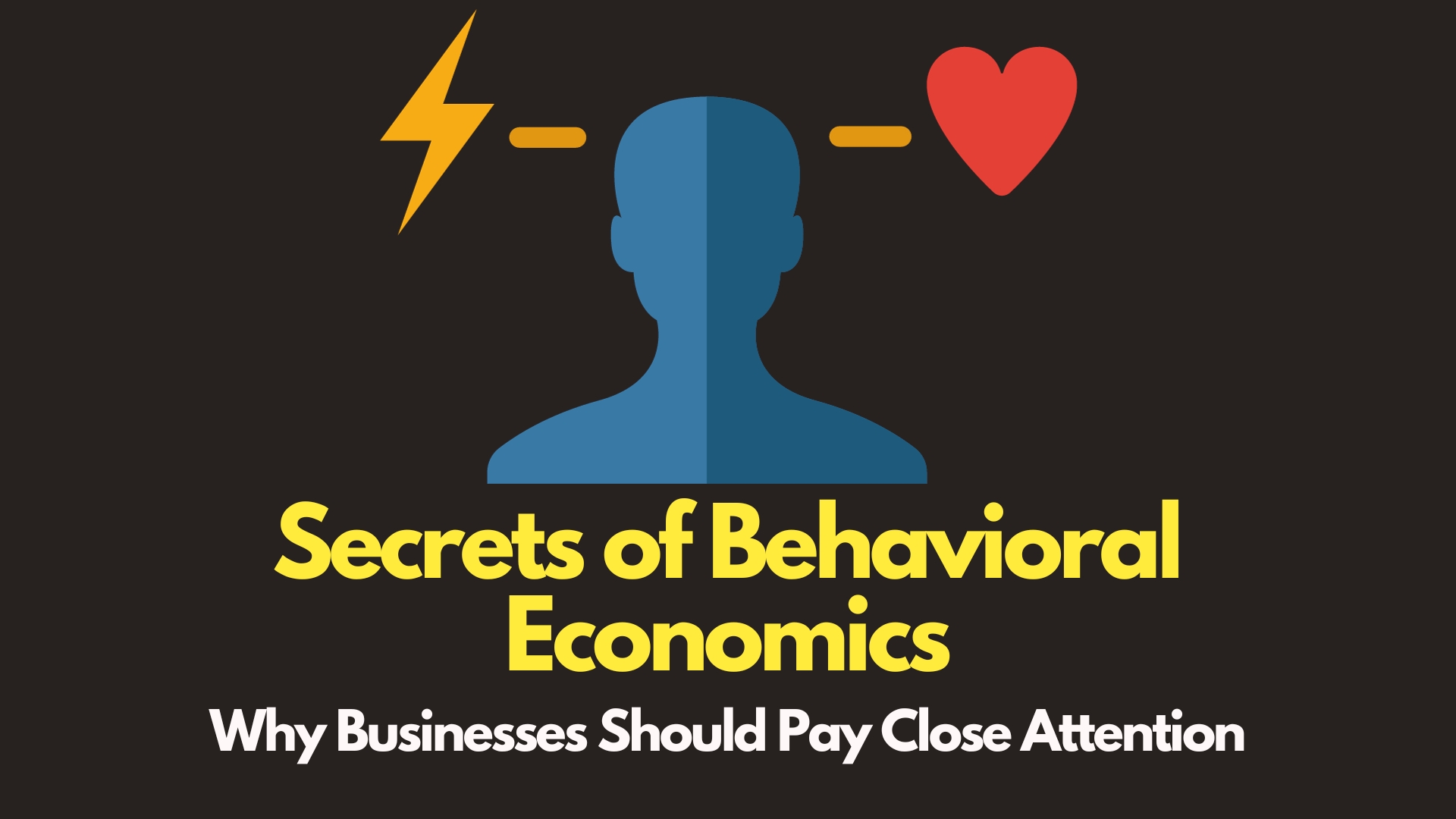Published
- 9 min read
Behavioral Economics in Consumer Behavior

Key Takeaways:
- Behavioral economics is a vital field that explores the cognitive biases influencing consumer decisions.
- It challenges the traditional rational choice theory by including psychological factors in the analysis of consumer behavior.
- Understanding behavioral economics can lead to more effective marketing strategies and consumer welfare improvements.
- Nudges and choice architecture are tools used in behavioral economics to guide consumer behavior positively.
Behavioral economics has revolutionized our understanding of consumer behavior, revealing the complex psychological mechanisms that drive purchasing decisions. In this article, we’ll delve into how behavioral economics affects consumer behavior and the implications for businesses and marketing strategies.
The Psychological Underpinnings of Consumer Choices
At the heart of behavioral economics lies the recognition that consumers are not the rational agents classical economics once assumed. Instead, their decisions are subject to a range of cognitive biases and emotional influences. This realization has profound implications for how businesses approach marketing and sales, as it shifts the focus from purely economic incentives to the psychological triggers that can make or break a consumer’s decision to purchase.
The Role of Nudges in Shaping Consumer Behavior
Behavioral economists have introduced the concept of “nudges” — subtle adjustments to the environment or context in which decisions are made, which can significantly impact consumer behavior. These nudges don’t restrict choices but instead make it easier for consumers to make beneficial decisions, whether it’s choosing healthier food options or opting into sustainable practices.
The Impact of Behavioral Economics on Marketing Strategies
Understanding the principles of behavioral economics is crucial for developing effective marketing strategies. By recognizing the non-rational elements of consumer decision-making, marketers can craft campaigns that resonate more deeply with their target audience. This involves leveraging emotions, social proof, and the framing effect to create compelling narratives that drive sales.
Behavioral Economics in the Digital Age
The rise of e-commerce and digital marketing has provided a fertile ground for applying behavioral economics principles. Online platforms can use data analytics to tailor nudges and personalize the shopping experience, making it more likely that a consumer will complete a purchase.
The Ethical Considerations of Behavioral Economics
As businesses harness the power of behavioral economics, they must also consider the ethical implications. While nudges can be used to promote positive behaviors, they also raise questions about manipulation and consumer autonomy. It’s essential for businesses to strike a balance between influence and ethical responsibility.
Exploring the Intersection of Behavioral Economics and Consumer Decision-Making
Behavioral economics offers a more nuanced view of consumer behavior, accounting for the myriad of factors that influence decision-making. By understanding these factors, companies can devise strategies that align with the natural tendencies of their consumers, leading to improved satisfaction and loyalty.
Cognitive Biases and Consumer Behavior
Cognitive biases, such as the availability heuristic or confirmation bias, significantly impact consumer behavior. These biases can lead to decisions that deviate from what would be expected if consumers were perfectly rational. Marketers can design their strategies to account for these biases, potentially increasing the effectiveness of their campaigns.
The Power of Emotional Appeal
Emotions play a critical role in consumer behavior. Behavioral economics acknowledges this by examining how feelings like happiness, fear, or social acceptance can influence purchasing decisions. By tapping into these emotions, marketers can create powerful connections with their audience, driving both engagement and sales.
Contextual Influences on Purchasing Decisions
The context in which consumers make decisions can also affect their behavior. This includes the physical environment, such as store layout, or the digital context, like website design. By optimizing these environments using insights from behavioral economics, businesses can nudge consumers toward desired actions.
Encouraging Pro-Environmental Behavior
One of the promising applications of behavioral economics is in encouraging pro-environmental behavior. By using nudges, such as default options or social norms, businesses and policymakers can promote sustainable practices without resorting to heavy-handed regulations or significant economic incentives.
Consumer Welfare and Behavioral Economics
Ultimately, the goal of applying behavioral economics in consumer behavior is to enhance consumer welfare. By better understanding the decision-making process, businesses can provide products and services that truly meet consumer needs and contribute to their well-being.
Wrap-up
Behavioral economics has provided valuable insights into the complexities of consumer behavior. By considering the psychological factors at play, businesses can develop more effective marketing strategies, create positive consumer experiences, and contribute to overall consumer welfare. As this field continues to evolve, it will undoubtedly continue to shape the landscape of consumer behavior and business strategy.
Further Reading
- Explore the broader implications of behavioral economics in the business sector.
- Understand the connection between marketing psychology and consumer choices.
- Dive deeper into the psychology of consumer behavior.
Behavioral Economics: Crafting Consumer Experiences for Better Choices
Key Takeaways:
- Behavioral economics can enhance consumer experiences by understanding decision-making processes.
- Choice architecture is a key concept, structuring choices in a way that nudges consumers towards beneficial outcomes.
- Ethical marketing practices must be upheld when applying behavioral economics to respect consumer autonomy.
The intricate dance between consumer choice and behavioral economics is a fascinating study of human nature and market forces. In this section, we’ll explore how businesses can use behavioral economics to craft consumer experiences that not only meet needs but also guide consumers towards making better choices for themselves and society.
Choice Architecture: Designing Decisions for Positive Outcomes
Choice architecture is a cornerstone of behavioral economics, focusing on how the presentation of choices can influence decision-making. By structuring choices in a way that highlights the benefits or reduces the complexity, businesses can help consumers make decisions that are in their best interest. This can range from simplifying insurance plans to presenting healthier food options more prominently.
Leveraging Behavioral Insights for Customer Engagement
Engaging customers is not just about catching their eye, but also about holding their attention and leading them towards a decision. Behavioral economics teaches us that engagement is deeply rooted in psychological factors. For instance, the endowment effect makes consumers value what they already own more highly than what they don’t—this insight can be used to create a sense of ownership before the purchase.
The Significance of Social Proof in Consumer Behavior
Humans are inherently social creatures, and the influence of others plays a significant role in our decisions. Behavioral economics harnesses this through social proof, which is the concept that people will follow the actions of the masses. Displaying best-selling products or customer testimonials can leverage social proof to influence consumer behavior positively.
Ethical Marketing and Consumer Autonomy
While the tools of behavioral economics are powerful, they come with a responsibility to respect consumer autonomy. Transparency and honesty are crucial in ensuring that the nudges provided are ethical and in the best interest of the consumer. Businesses must walk the fine line between influence and manipulation, always prioritizing the consumer’s right to make an informed choice.
Personalization and Behavioral Economics
In the age of big data, personalization has become a buzzword in marketing. Behavioral economics can take personalization a step further by not just tailoring experiences to individual preferences but also to individual decision-making styles. This can lead to more effective and satisfying consumer interactions.
Conclusion
Behavioral economics doesn’t just explain consumer behavior—it provides a toolkit for enhancing consumer experiences and guiding better choices. As businesses continue to apply these principles, they must do so with an eye towards ethical practices and the ultimate goal of improving consumer welfare.
Further Reading
- Discover how emerging technologies impact e-commerce and consumer behavior.
- Learn about the role of emotions in purchasing decisions from a behavioral economics perspective.
- Gain insights into the psychology of discounts and how they affect consumer behavior.
Navigating the Mind: How Behavioral Economics Influences Consumer Behavior

Key Takeaways
- Behavioral economics provides insights into the subconscious influences on consumer behavior.
- The field challenges the notion of consumers as purely rational actors, incorporating the role of heuristics and biases.
- Marketers can use behavioral economics to tailor strategies that align with subconscious consumer preferences.
- Ethical considerations are paramount when applying behavioral economics to consumer behavior.
Behavioral economics has emerged as a key player in understanding the often-subconscious influences on consumer behavior. This section delves into the intricacies of how behavioral economics challenges traditional views of consumer rationality and how marketers can ethically leverage these insights to shape consumer experiences and choices.
Beyond Rationality: Heuristics and Consumer Decision-Making
Traditional economic theory has long posited that consumers make rational decisions to maximize utility. However, behavioral economics suggests that consumers often rely on heuristics—mental shortcuts that simplify decision-making. These shortcuts can lead to biases, such as overvaluing immediate rewards over long-term benefits, which marketers can address by framing choices in ways that align with these natural inclinations.
The Influence of Anchoring on Perceived Value
Anchoring is a cognitive bias where individuals rely too heavily on the first piece of information they encounter. In consumer behavior, this often relates to price perception. For instance, showing the original price next to a discounted price can create a sense of value and urgency, encouraging purchases. Understanding this concept can help businesses craft marketing strategies that effectively set the stage for consumer perception.
Loss Aversion and Its Role in Consumer Choices
Loss aversion—the idea that losses loom larger than gains—can have a significant impact on consumer behavior. Marketers can utilize this by emphasizing what consumers stand to lose by not purchasing a product or service, rather than just the benefits they gain. This tactic can be particularly effective in time-limited offers or loyalty programs that highlight missed opportunities.
The Subconscious Influence of Colors in Marketing
Colors can have a profound subconscious impact on consumer behavior. The color of success in marketing psychology is not a one-size-fits-all, but rather it depends on the product and the emotional response marketers wish to elicit. For example, blue can invoke trust, while red can create a sense of urgency. By applying the insights of behavioral economics, marketers can strategically use color to influence consumer behavior.
Ethical Marketing: A Behavioral Economics Perspective
While behavioral economics offers powerful tools for influencing consumer behavior, it also raises ethical questions. It is vital for marketers to use these insights with integrity, ensuring that consumers are not deceived or manipulated. Ethical marketing practices foster trust and long-term relationships with consumers, which are essential for sustainable business success.
Wrap-up
Behavioral economics has opened new doors for understanding and influencing consumer behavior. By acknowledging the complex interplay of rationality, heuristics, and biases, marketers can develop strategies that resonate with consumers on a deeper level. However, the ethical application of these strategies is crucial to maintain consumer trust and promote long-term business viability.
Further Reading
- Gain insights into the impact of cultural factors on consumer behavior.
- Learn how packaging impacts consumer choice through behavioral economics principles.
- Explore the hidden psychology behind brand loyalty and its connection to behavioral economics.